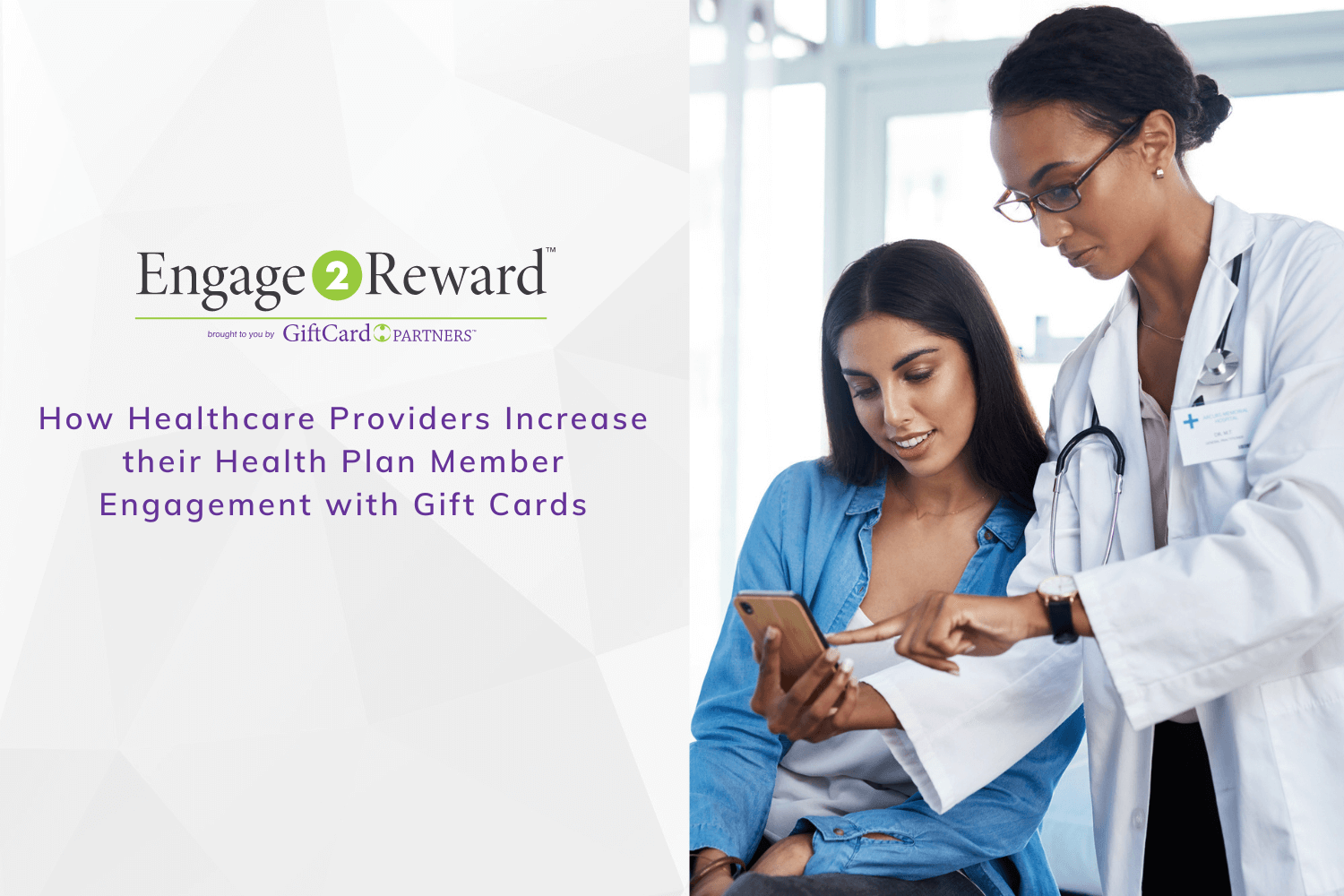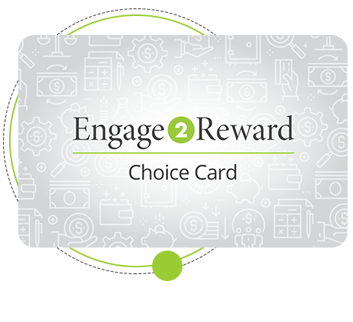Increasing engagement between healthcare providers and health plan members or patients can improve outcomes for providers, members, and the health plan alike. There are a variety of ways health plans drive member engagement, but using healthcare providers as part of that process is a great way to bring plan members closer to their own healthcare management, making them more proactive and often healthier.
There are many gift card use cases in healthcare settings and they can vary based on the situation. Read on to learn more about how healthcare providers can use gift cards to drive engagement with health plan members and how actual Engage2Reward™ customers are using these programs.
Health and Wellness Rewards
Health and wellness rewards are a great way to drive engagement, but plan members may expect these programs to come from their employer, rather than from a health plan or a provider. Driving healthy living programs at the provider and plan level allows members to:
- Build healthy habits that their doctors can tailor directly to their health needs/risks
- Allow providers to build real relationships with patients and connect with them more than just at their annual physical
- Create an environment where members can connect their health habits directly to their health plan
Adding gift cards to health and wellness programs provides motivation for members and rewards them for completing or maintaining desired behavior. Boosting member engagement through gift card incentives can improve the outcomes for members and for the programs. Engage2Reward™ customer Erickson Senior Living uses gift cards as incentives for health and wellness activities, helping to motivate plan members to establish and maintain a healthy lifestyle at any age.
Preventive Healthcare Incentives
Preventive care and the required appointments can be some of the toughest interactions to schedule and execute with plan members. However, preventive care is critical for long-term health and cost control for health plans and its members. Engage2Reward™ customer Turning Point Inc. uses gift cards to incentivize HIV testing for clients in their care, empowering these clients to take charge of their health and be proactive in managing their own care. Another customer, Brilliant Corners, uses gift cards to drive vaccinations for the population they serve. Using gift cards to drive critical healthcare will:
- Build a positive association with preventive care
- Increase participation in preventive care programs
- Enhance overall health plan member engagement in these programs
As you think about making an impact in members’ healthcare journeys, consider how to use gift cards to drive value with the member. If the gift card incentive has a perceived value to the member, they are more likely to take the desired action.
The Engage2Reward™ Choice Card allows members to redeem the value of their gift card to one of over 250 retailers in the Engage2Reward™ gift card ordering platform, almost guaranteeing that they can find lasting value in the rewards they are earning. Rewarding health plan members with Engage2Reward™ Choice Cards is a great way to drive success, especially if these are new programs for your plan or participating providers.
Member Outreach Incentives
When health plan members receive a tough diagnosis or require re-engagement, member outreach from a health plan or health provider is warranted. Either of these situations are common and adding an incentive to that outreach interaction strengthens the likelihood that members will interact with member outreach representatives. Enhancing health plan member engagement with gift cards for member outreach can:
- Help a member with a difficult diagnosis cope with their situation
- Drive maintenance of healthy habits and preventive care for members who need to be re-engaged
- Be an opportunity for the health plan to connect with individual members on a personal level
Engage2Reward™ customer United Breast Cancer Foundation uses gift cards to conduct outreach to breast cancer patients along their treatment journey. These outreaches are driven with gift cards, allowing the patients to use the gift card to make their treatment a little easier, while it allows the Foundation to ensure their outreach team is connecting with patients directly.
Conclusion
Gift cards for healthcare provider member engagement may seem like a new tactic but these uses for gift cards in healthcare settings drive engagement, motivation, and more positive outcomes for healthcare plans, providers and their members.










